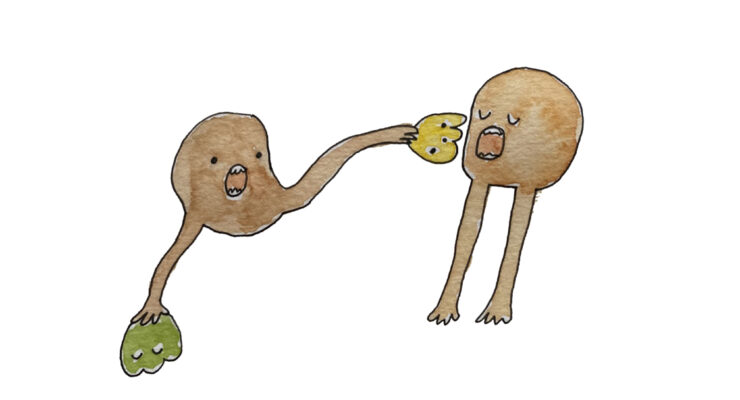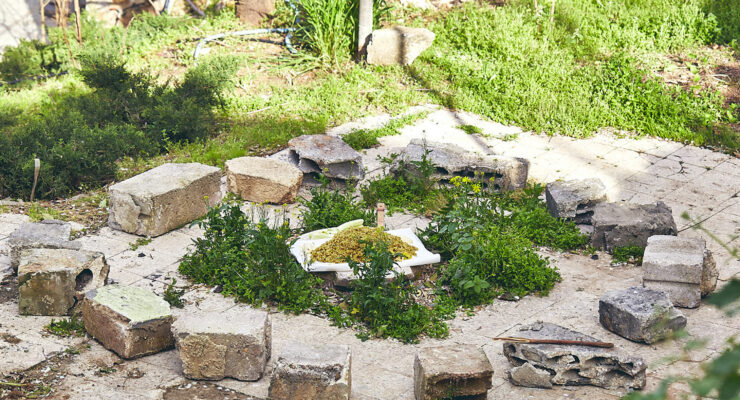“What can design do for food?”
Food and design is a relatively new, unarticulated space in design. Because of this, as a unifying platform for those working in this space, it is important for us to acknowledge that many people in this field are still considering how to articulate their identity to those functioning outside of our field. This is why the Dutch Institute of Food & Design is creating a manifesto. We want to communicate better to people unfamiliar with food and design the ideas behind what we do. The manifesto is a place to collect intentions and to record the process of a growing and changing platform. It will contain opinions, questions, speculations, and contradictions. Our manifesto will grow and change continuously and help to serve as a representative of the aims and aspirations of the DIFD and the people it represents.
In order to collect input for the manifesto, we began by gathering statements from our international correspondents on the question, “What can design do for food?”. Using this as a starting point, we continued compiling insights and inputs during Dutch Design Week 2018 at our Edible Invisible exhibition through a talk series we called Tea Talks and Food Futures. We interviewed participants live during the exhibition, and through our Manifesto Event, where we invited participants in the field of food and design to share their insights, opinions, and ideas on where food and design stands and where it could go. Ideas were collected on topics ranging from the use of food as material to the power of what design can do for food in agriculture, in cities, in technology, and in the future. We will continue to feed the Manifesto throughout the coming year, and in partnership with What Design Can Do we will continue to ask the question, “What can design do for food?” worldwide.
On the role of food in design
Beginning with defining the role that food has in design, many emphasised the use of food as a tool to get a point across. Eating encourages participation, and it creates design that can be experienced through multiple senses: the combination of participation and sensory stimulation has great power to influence our thoughts and emotions. The universality of food was discussed as one of its main strengths as a medium: in addition to being a highly understandable material, it can be used and harnessed by anybody- whether they have experience in cooking or not.
On the role of design in food education
Participants also emphasised the role that design has in the discovery or re-discovery of food- saying that design can unlock the potential held in new sources of food, and revive the potential in forgotten or discarded foods. In conjunction with this was the importance of design as an educational tool to increase awareness and celebrate diversity- such as the use of design to remember the historical contexts of food, or the spreading of knowledge on how to grow, prepare, hack, and code food.
“Design can create speculative scenarios that help people imagine broader food futures.”
On food, design, and technology
Technology is seen as a gateway to the future by much of humanity. Technology plays a large part in the future of food, and design can teach us how to handle it- for example, by posing ethical questions. It can influence the course of technology by speculating on the future and challenging currently held beliefs, thus functioning as an inspiration and catalyst for technological developments to come.
In addition, participants mentioned that design can change the consumer-food relationship- and when consumers change, the market changes, and the system as a whole will change as a result. It was recognised that at present, food (the lack of it, the lack of choice for it, the way it is produced) can still be a form of oppression. Design can help make good food less of a privilege, and more of a right- while considering the rights of those involved in production as well.
On food, design, and agriculture
The main vein addressed in the area of food production was that of agriculture. Participants stated that the unconventional approach of design is valuable in a field as focused as agriculture, since it increases options in creating solutions within it. It was also said that design can bring stakeholders together within agriculture and the greater food system; stakeholders referring in this case to producers, consumers, middlemen, and corporations, but other parties such as land, animals, plants, and water as well.
Within the topic of agriculture, waste was another oft mentioned topic. Many emphasised the need for a new business model or a different usage of the system to address and reduce farm and agricultural waste.
“Innovation and ideology can be edible, and it should be delicious.”
On design and food systems
In discussions pertaining to food systems and design, there was a recurring theme: How do we reconcile increasingly large-scale food production with the increasing value that society places in individualism?
Design calls the importance of ‘local’ food into question in a growing global food system. Design can bridge global food production with individual identity, and it can also create alternatives to said global food production. Monitoring and transparency of information were addressed in participants’ conversations with the idea that retail can become a platform for explaining and simplifying information as opposed to a platform solely intended to sell.
It the context of food and urbanism, participants said that food can be incorporated into healthcare, and that design can play an important role in creating a circular infrastructure for food within city planning. Urban farms and vertical farming were mentioned in this context.
“Design can play an important role in creating a circular infrastructure for food within city planning.”
“Design can be a method to subvert the ways of established [food] corporations.”



Perhaps the most recurring theme from participants in both the interviews and the event was that of empathy. In addition to being described as a ‘lubricant’ for empathy, food was described by participants as a gateway to people’s hearts. Many defined the power of food and design as the power to open or change opinions, and the technique that design employs as the manipulation of emotion. Design can enhance a sense of empathy, intimacy, and belonging through food.
“Everyone understands it when it is on their plate, and trying triggers acceptance.”
Food has the power to build bridges, and designers can harness this power to improve their worlds. Over the course of Dutch Design Week 2018, we were able to build up a collective vision on how we can use design in food and what we can do with this power. The manifesto will continue to grow and change in content and in form, and we invite you to stay in the loop for all of its future permutations.

Illustration by Su Park (October 2018)











